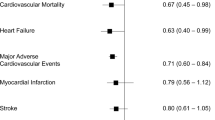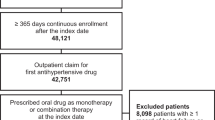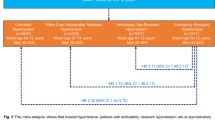Abstract
The last decade has seen the publication of different editions of guidelines for the pharmacological treatment of hypertension that were based on the results of large, randomised trials. Since these guidelines were meant to inform practitioners, we analysed the pattern of prescription of antihypertensive agents between 1988 and 1997 among older hospitalised adults. Because of the wealth of data supporting the use of thiazides diuretics, we focused on diuretic prescription, to identify independent predictors of their utilisation. To this end, we used the GIFA database that includes patients admitted to academic medical centres throughout Italy between 1988 and 1997. We studied 5061 patients over 65 years of age selected among a population of 28 411, based on the diagnosis of arterial hypertension at discharge. The use of ACE-inhibitors has been raising steadily through the years, and they are the agents most commonly used since 1996. Calcium channel blockers showed a similar trend and were the top prescribing drug until 1995; afterwards, the documentation of potentially severe side effects has resulted in a nearly 20% reduction of their use. Beta-blockers have remained unpopular throughout the decade. Instead, the prescription of diuretics as a class showed a biphasic trend; an initial decrease with a prolonged steady state and a more recent raise. However, at a separate analysis, it was a evident that a progressive increase of the use of loop diuretics since 1988 has been paralleled by a nearly 50% reduction of thiazides prescriptions. Loop diuretics were more likely to be prescribed to older individuals, those with cardiac heart failure, coronary heart disease and high creatinine level. In contrast, independent predictors of thiazides use were female gender, good functional status, preserved renal function, and absence of cardiovascular comorbidity. In conclusion, despite continued recommendations to use thiazides diuretics for the treatment of hypertension among older individuals, their use has been declining steadily between 1988 and 1997. A possible explanation is that the choice to prescribe a thiazides diuretic is influenced by age, functional status and comorbidity.
This is a preview of subscription content, access via your institution
Access options
Subscribe to this journal
Receive 12 digital issues and online access to articles
$119.00 per year
only $9.92 per issue
Buy this article
- Purchase on Springer Link
- Instant access to full article PDF
Prices may be subject to local taxes which are calculated during checkout
Similar content being viewed by others
Author information
Authors and Affiliations
Consortia
Corresponding author
Rights and permissions
About this article
Cite this article
Onder, G., Gambassi, G., Landi, F. et al. Trends in antihypertensive drugs in the elderly: the decline of thiazides. J Hum Hypertens 15, 291–297 (2001). https://doi.org/10.1038/sj.jhh.1001176
Received:
Accepted:
Published:
Issue Date:
DOI: https://doi.org/10.1038/sj.jhh.1001176
Keywords
This article is cited by
-
Prevalence, prescribing and barriers to effective management of hypertension in older populations: a narrative review
Journal of Pharmaceutical Policy and Practice (2015)
-
Patterns of antihypertensive prescribing, discontinuation and switching among a Hong Kong Chinese population from over one million prescriptions
Journal of Human Hypertension (2008)
-
Socioeconomic status and hospitalization in the very old: a retrospective study
BMC Public Health (2007)
-
Inappropriate medication use among hospitalized older adults in Italy: results from the Italian Group of Pharmacoepidemiology in the Elderly
European Journal of Clinical Pharmacology (2003)



